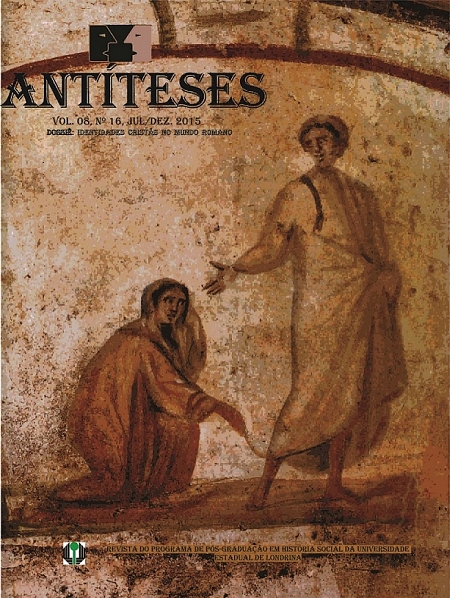Apresentação
DOI:
https://doi.org/10.5433/1984-3356.2015v8n16p9Keywords:
History, Identities, Christianity, Roman EmpireAbstract
For a long time in historiography, the formation of Christianity was analyzed from two broad categories - Judaism and Hellenism - which, related to each other, would have created "the avenue for Christianity", in the words of Johann Gustav Droysen in the mid-19th century . More recently, it is known how restrictive this type of analysis is and, in this sense, a third element has been brought to the center of discussions: the Roman Empire or, more generally, the Roman world in which the Christian movement was born - world this one with its very specific political order and the socio-economic and cultural issues that are related to it. Allied to this historiographical advance, the contribution of anthropological studies to the analysis of cultural identity has allowed identity theorists to think of it, currently, as something relational, fluid and plural to the point of understanding that the same individual or social group can present multiple identities, depending on the context and relationships in which it is inserted. The use of this new understanding of identity on the universe of Christian sources produced in the Roman world allowed the observation of various forms of manifestation of Christian identity itself or, in current terms, of Christian identities (in the plural). In order to broaden the analysis of such issues, this dossier brings together the work of researchers who discuss this theme within the time frame of the first four centuries (1st to 4th century AD) of the life of Christianity in the scope of the Roman Empire.Downloads
Download data is not yet available.
Downloads
Published
2016-01-18
How to Cite
SELVATICI, Monica. Apresentação. Antíteses, [S. l.], v. 8, n. 16, p. 9–10, 2016. DOI: 10.5433/1984-3356.2015v8n16p9. Disponível em: https://ojs.uel.br/revistas/uel/index.php/antiteses/article/view/23844. Acesso em: 16 jan. 2026.
Issue
Section
Apresentação
License
Copyright (c) 2015 Antiteses

This work is licensed under a Creative Commons Attribution 4.0 International License.
The journal reserves the copyright on the contributions published, without material compensation for the author, and may make them available online in Open Access mode, through its own system or other databases; you can also make normative, orthographic and grammatical changes in the originals, in order to maintain the cultured standard of the language, with the final consent of the authors. The opinions expressed by the authors are their sole responsibility.










